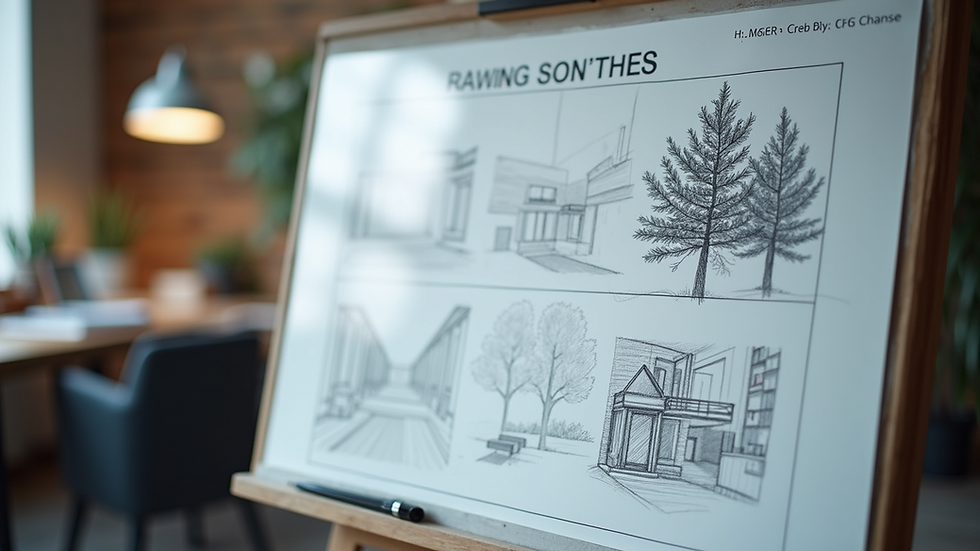Understanding the Basics of Website Creation
- Julie Howe
- Jun 6
- 4 min read
Creating a website may seem daunting, but with the right tools and knowledge, anyone can do it. In this post, we will explore the essential steps involved in website creation, from concept to execution. Whether you want to start a blog, an online store, or a personal portfolio, understanding these basics will set you up for success.
Website Creation: The First Steps
Before diving into technical aspects, it's vital to plan your website. Start by identifying your goals. Ask yourself questions like:
What is the purpose of your website?
Who is your target audience?
What kind of content will you be sharing?
Having clear answers will guide your design and functionality choices. Additionally, sketch out a rough layout. Visualizing where elements like text, images, and navigation will go can help clarify your vision.

Choosing a Domain and Hosting
One of your first practical steps will be choosing a domain name, which represents your website's address on the internet. A good domain name should be memorable, easy to spell, and relevant to your content. You can explore various domain registration sites to find and secure your unique name.
After securing your domain, you’ll need web hosting. Hosting is where your website lives online. It's essential to select a reliable hosting provider to ensure your site runs smoothly. Popular options include Bluehost, SiteGround, and HostGator. They each offer various plans to fit your needs, whether you're launching a simple blog or a complex e-commerce site.

Selecting the Right Platform
Choosing how to build your website is a pivotal step. There are several platforms available, each with advantages and disadvantages. Here are some of the most popular ones:
WordPress
Ideal for blogs and content-heavy sites.
Offers thousands of themes and plugins for customization.
Requires some learning but offers great flexibility.
Wix
User-friendly with drag-and-drop features.
Great for beginners who prefer simplicity.
Offers less customization than WordPress.
Squarespace
Known for stunning templates and great design.
Excellent for portfolios and small businesses.
Slightly pricier compared to other options.
Shopify
Specifically designed for e-commerce sites.
Provides built-in tools for online sales, inventory, and shipping.
User-friendly interface focused on selling.
Deciding on a platform depends on your needs and technical skills. Take the time to explore each one and choose what fits your goals best.

Designing Your Website
Once you've chosen a platform, it’s time to design your website. Design involves the layout, colors, fonts, and overall aesthetic. Here are some key principles to follow:
Consistency: Use the same colors and fonts across your site to create a cohesive look.
User-Friendly Navigation: Ensure that visitors can easily find what they are looking for. A clear menu and search function can help.
Responsive Design: Your site should look good on all devices - desktops, tablets, and smartphones. Most platforms offer templates that adapt automatically.
Visual appeal matters, but functionality is equally important. Ensure your site loads quickly and offers a seamless experience for users—keeping those bounce rates low.
Content Creation and Optimization
Content is the backbone of any website. This is where you provide value to your audience. However, it’s not just about writing; it's also about optimizing. Here are some tips to enhance your content:
SEO (Search Engine Optimization): Use keywords relevant to your audience within your content. Tools like Google Keyword Planner can help you find great keywords to target.
Quality Over Quantity: Focus on delivering high-quality content that will engage your readers. Well-researched articles, eye-catching images, and helpful resources will keep them coming back for more.
Call to Action: Encourage visitors to take action, whether it’s signing up for a newsletter, commenting on a post, or making a purchase. Clear and enticing CTAs can guide them.
Creating valuable content is an ongoing effort. Regularly update your website to keep it fresh and relevant.
Launching Your Website
After all the planning, designing, and content creation, you're ready to launch your site! Before hitting that publish button, consider these final checks:
Test Everything: Check all links, forms, and buttons to ensure they work correctly.
Mobile Responsiveness: Test how your site looks on various devices. Make adjustments as needed.
Analytics Setup: Install analytics tools like Google Analytics to track visitor behavior. Understanding your audience will help you improve over time.
Celebrate this accomplishment! Launching your website is a significant milestone.
Ongoing Maintenance
Website creation doesn't stop at launch. Continuous maintenance is crucial for keeping your site running smoothly. Here are some considerations for ongoing upkeep:
Regular Updates: Update your content and software to protect against security vulnerabilities.
Monitor Performance: Keep an eye on your page load speeds and troubleshoot any issues that arise.
Engagement: Foster community by responding to comments and updating users with new content.
Consider scheduling regular evaluations of your website's performance and content to stay ahead of any potential issues.
Growing and Evolving Your Website
Your website is not a set-it-and-forget-it project. It's an evolving entity that should grow with your goals and audience needs. Engage through:
Social Media: Share your content to reach a broader audience.
Email Marketing: Develop a mailing list from your visitors to keep them informed and engaged.
Collaboration: Connect with other bloggers or businesses to cross-promote and expand your reach.
Continuously seek feedback from your audience. What do they like? What do they want to see more of? Adapting to their preferences can help elevate your website's success.
Creating a website may take time, but with the right approach and a commitment to continuous improvement, you can create an online space that resonates with your audience and fulfills your goals. Happy building!



Comments